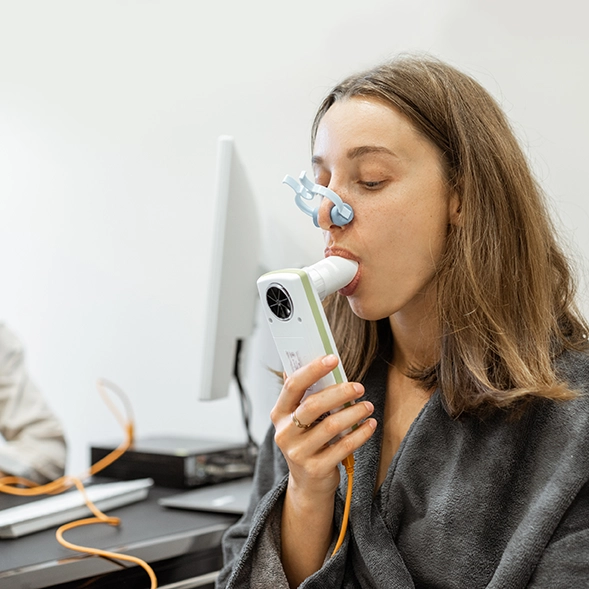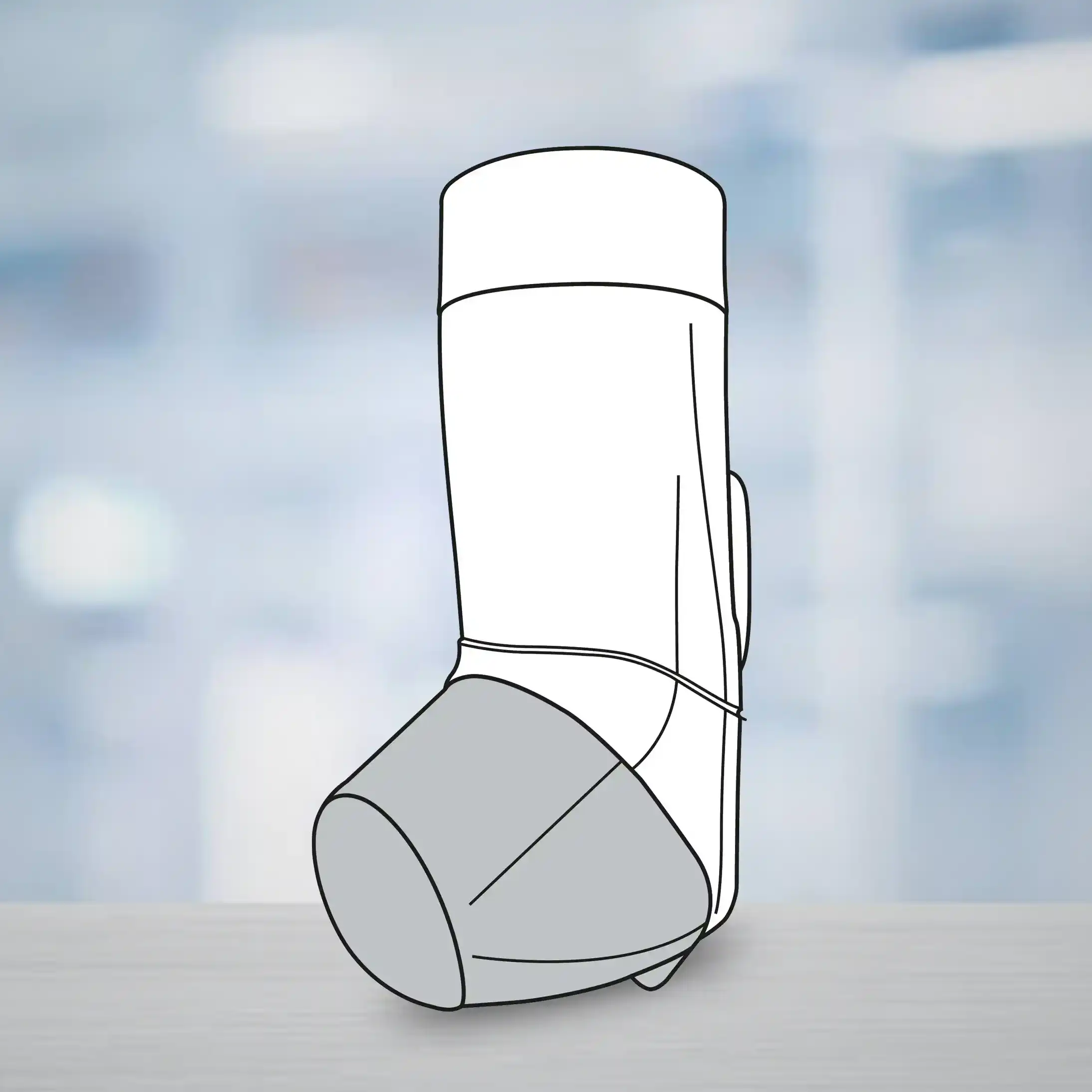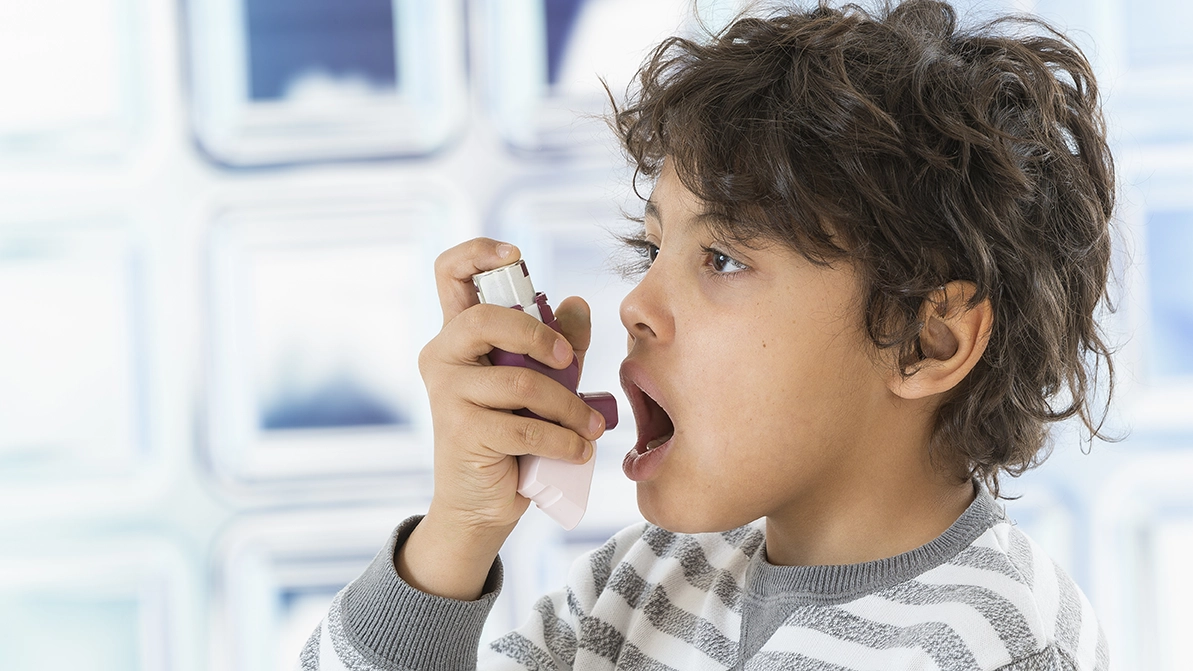Efficacy of Doxycycline in a Patient with Acute Respiratory Distress Syndrome and Dengue Fever with Coexistent Scrub Typhus Infection
Case Presentation
A 51-year–old female presented with complaints of fatigue, body pain, and severe muscle pain for the past 4 days. She had initially received treatment at another hospital for a diagnosed urinary tract infection and had been treated with intravenous (IV) ceftriaxone. However, on the second day of admission, she had reduced urine output, difficulty breathing, and yellowish skin and mucous membrane discoloration. She was subsequently transferred to another hospital due to worsening oxygenation.
The patient had a history of type 2 diabetes mellitus and systemic hypertension and was on oral hypoglycemic agents and Cilnidipine 10 mg twice daily.
Physical Examination
The patient appeared to be conscious on inspection.
Vital Signs
● Blood pressure: 130/80 mmHg
● Heart rate: 132 beats/minute
● Respiratory rate: 42 breaths/minute
● Temperature: 102°F
● Oxygen saturation (SPO2): Alarmingly low at 80% despite receiving 10 L of oxygen through a non-rebreather mask.Systemic Examination
● Cardiovascular system: Normal heart sounds (S1/S2).
● Central nervous system: No focal neurological deficits reported.
● Chest examination: Bilateral crepitations in the chest, indicating possible lung involvement.
● Yellowish discoloration of the skin and mucous membranes, indicating potential liver dysfunction: Icterus (+).
● Tiny red or purple spots on the skin, suggesting possible bleeding or clotting abnormalities: Petechiae (+).
Laboratory Investigations
The patient was directed for further assessment and treatment. Laboratory investigations of the patient are detailed in Table 1.
Table 1: Laboratory investigations
|
Parameter |
Observed value |
|
Neutrophils |
67% |
|
Lymphocytes |
28% |
|
Monocytes |
05% |
|
Erythrocyte sedimentation rate |
70 mm/h |
|
Packed cell volume |
32.5% |
|
Red blood cells |
3.74 million/cumm |
|
Mean corpuscular volume |
86.9 fL |
|
Mean corpuscular hemoglobin |
29.9 Pg |
|
Mean corpuscular hemoglobin concentration |
34.4% |
|
C-reactive protein |
19.3 mg/L |
|
Sodium |
136.7 mEq/L |
|
Potassium |
4.09 mEq/L |
|
Total bilirubin |
2.50 mg/dL |
|
Direct bilirubin |
1.51 mg/dL |
|
Alanine aminotransferase |
165 U/L |
|
T proteins |
5.56 g/dL |
|
Albumin |
2.47 g/dL |
|
Globulin |
3.1 g/dL |
The results of the patient's diagnostic tests were as follows:
- Urine culture and blood culture: Both urine and blood cultures came back sterile, indicating the absence of bacterial growth in these samples.
- Dengue NS1: The test for dengue NS1 (a viral antigen) was positive, suggesting the presence of dengue infection.
- Scrub Immunoglobulin M (IgM): The test for scrub IgM antibodies was positive, indicating the presence of IgM antibodies associated with a recent or active infection of scrub typhus.
Diagnosis
The patient was diagnosed with acute respiratory distress syndrome leading to type 1 respiratory failure. Additionally, she also had dengue fever (DF) and a concurrent scrub typhus infection.
Management
Treatment Plan on Admission
The patient’s treatment plan initially involved the administration of the following empirical antibiotics:
- IV meropenem 1 g three times a day for 3 days. This was later de-escalated to IV ceftriaxone at a dose of 1 g twice a day (BD) after culture results were obtained, and this continued for 10 days.
- Inj. doxycycline 100 mg IV BD for 10 days.
Details of starting IV doxycycline therapy
- Dosage: 100 mg of doxycycline IV twice daily.
- Time and duration of infusion: Administered in 100 mL of normal saline over 30–45 minutes for each dose.
- Duration of therapy: The treatment course consisted of 10 days.
- Combination antibiotic: In combination with doxycycline, ceftriaxone was used.
- Diluent used: Sterile water was used for preparing and administering the medication.
Table 2 provides details of certain laboratory investigations conducted for the patient during admission and discharge.
Table 2: Selected laboratory test results at admission and discharge
|
Parameter |
At admission |
At discharge |
|
Hemoglobin |
13.4 g/dL |
11.2 g/dL |
|
Total count |
16500 cells/cumm |
9300 cells/cumm |
|
Platelet count |
47000 lakhs/cumm |
1.4 lakhs/cumm |
|
Serum glutamic oxaloacetic transaminase |
250 |
100 U/L |
|
Serum glutamic pyruvic transaminase |
300 U/L |
144 U/L |
|
Creatinine |
2.81 mg/dL |
1.21 g/dL |
Given the negative cultures and the positive results for dengue and scrub typhus, it was likely that the patient had a tropical infection that typically responds well to doxycycline. This empirical treatment approach with doxycycline has proven effective, as evidenced by the patient's substantial clinical improvement, with successful weaning off non-invasive ventilation, and the ability to maintain oxygen levels on room air, resulting in a symptomatic cure.
Case Discussion
The incidence of DF has seen a significant rise over the past three decades. While DF is usually mild, some patients progress to severe forms characterized by bleeding, hematological issues, and plasma leakage. Elevated pro-inflammatory cytokine levels are linked to severe outcomes, such as dengue hemorrhagic fever and dengue shock syndrome. As no vaccines are currently available, antibiotics, such as doxycycline or tetracycline, are being explored for their potential to modulate cytokine responses.1
In a randomized controlled study, doxycycline demonstrated a reduction in pro-inflammatory cytokines, including interleukin 6 and tumor necrosis factor-alpha, among hemorrhagic fever patients. This resulted in a 46% lower mortality rate in the doxycycline-treated group (11.2%) compared to the standard care group (20.9%). These findings imply that doxycycline may benefit high-risk dengue patients by reducing pro-inflammatory cytokines, potentially mitigating complications.1 Rothan HA et al. demonstrated that doxycycline outperforms other tetracycline derivatives in inhibiting dengue NS2BNS3pro, leading to a substantial reduction in virus replication at concentrations significantly below cytotoxic levels.2
Bhattacharjee B et al. conducted a study to evaluate the effect of doxycycline on clinical outcomes in DF in eastern India. The treatment group received 100 mg doxycycline BID for 5 days and the control group received standard care. The treatment group experienced no bleeding or major bleeds (75%), had less plasma leakage (25%), lower hemodynamic compromise (8.30%), and a higher rate of no thrombocytopenia (41.70%), whereas the control group had 25% major bleeding, 58.3% plasma leakage, 16.7% hemodynamic compromise, and 16.7% no thrombocytopenia. Liver involvement was higher in the control group than in the treatment group. In the control group, 16.60% of patients had pancreatic involvement, 8.30% had renal involvement, and 8.30% had cardiac involvement, while no pancreatic, renal, or cardiac involvement was observed in the treatment group. The study's findings indicate that doxycycline treatment resulted in a noteworthy decrease in DF complications, offering protection against the risk of multiorgan failure.3
Indian Council of Medical Research (ICMR) guidelines for Antimicrobial Use in Common Syndromes suggest that clinicians may consider using doxycycline as an empirical treatment for patients with undifferentiated fever when rapid diagnostic tests for malaria and dengue come back negative.4
Therefore, based on scientific evidence and guidelines recommendations, doxycycline provides clinical benefits to high-risk dengue patients.
Conclusion
This case shows that initiating IV doxycycline can represent a significant advancement in the management of suspected type 1 respiratory failure accompanied by thrombocytopenia in regions with a high incidence of tropical illnesses like India. This empirical approach allows for timely intervention in critically ill patients, irrespective of positive serology, acknowledging the urgency of addressing potential infections associated with these clinical manifestations.
References
- Fredeking TM, Zavala-Castro JE, González-Martínez P, et al. Dengue patients treated with doxycycline showed lower mortality associated to a reduction in IL-6 and TNF levels. Recent Pat Antiinfect Drug Discov. 2015;10(1):51–58.
- Rothan HA, Mohamed Z, Paydar M, et al. Inhibitory effect of doxycycline against dengue virus replication in vitro. Arch Virol. 2014;159:711–718.
- Bhattacharjee B, Bhattacharya S, Sardar B, et al. Dengue and doxycycline-experience in a tertiary care hospital in eastern India in the year 2017-An initial report. J Pharmacol Ther Res. 2018;2(2):14–17.
- Treatment Guidelines for Antimicrobial Use in Common Syndromes. Available at: https://main.icmr.nic.in/sites/default/files/guidelines/Treatment_Guidelines_2019_Final.pdf. Accessed on: 12 September 2023.








